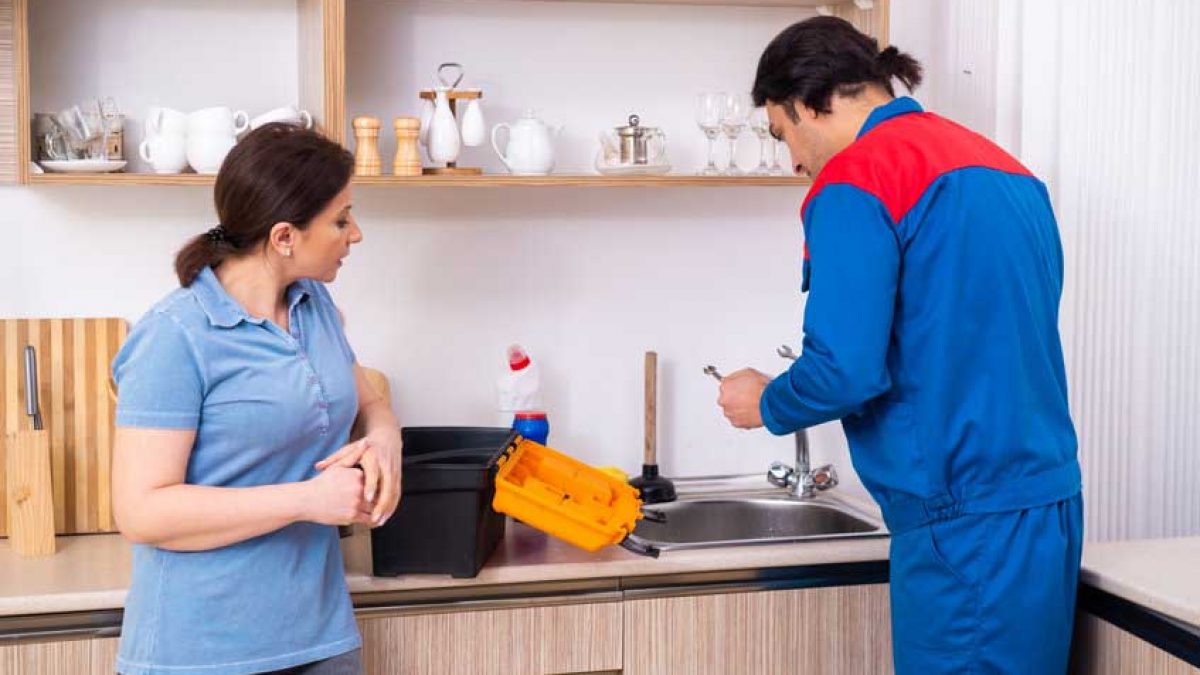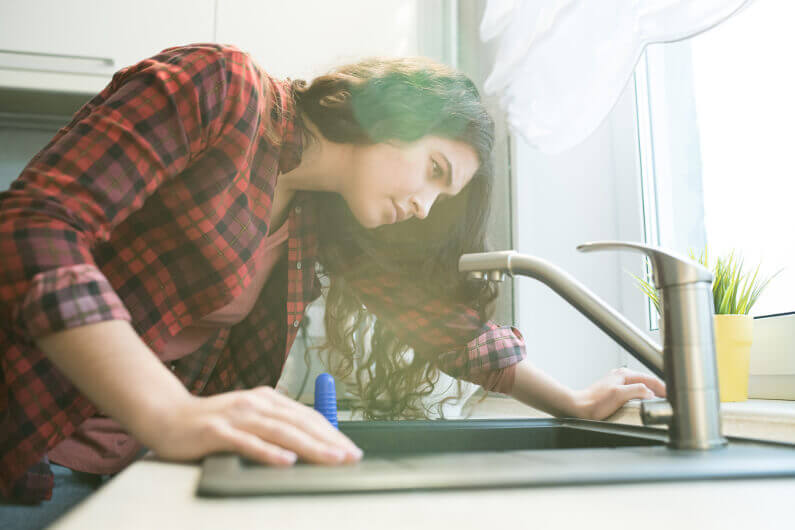This great article which follows pertaining to Plumbing Issues in Older Properties and How to Fix Them is totally entertaining. Check it out yourself and see what you think of it.

Older homes frequently feature charm, character, and background, but they can additionally bring a host of plumbing concerns. Whether you're taking care of aging pipelines, low water stress, or leakages, knowing exactly how to deal with these typical problems is vital to maintaining a secure and functional home. In this overview, we'll explore the typical pipes challenges dealt with by older homes and provide functional services to maintain your plumbing in leading form.
Comprehending Usual Plumbing Concerns
Aging Pipes
Among the most typical concerns in older homes is aging pipes. Relying on the era in which your home was built, the pipes could be made from materials that have worn away over time, such as galvanized steel, cast iron, and even lead. These materials can rust, come to be fragile, or establish leakages, leading to water damage and possible health hazards.
Low Water Stress
If you're experiencing low tide pressure, it could be because of natural resources, corrosion inside the pipes, or old fixtures that are no more operating effectively. This can be a significant aggravation, particularly in locations like showers and sinks.
Dripping Pipelines
Leaks are another regular concern in older homes, often caused by corroded or worn-out pipes. Even tiny leaks can lead to substantial water damages, mold and mildew growth, and enhanced water expenses otherwise attended to without delay.
Outdated Fixtures
Obsolete pipes fixtures such as faucets, toilets, and showerheads not only look old however may also be less effective, prone to leaks, or incompatible with contemporary pipes criteria.
Pipe Deterioration
Rust is an usual issue in older pipes, especially those made from galvanized steel or actors iron. Rusty pipelines can restrict water circulation, cause discoloration, and ultimately result in leakages or pipe bursts.
Analyzing the Problem of Your Pipes
Inspecting Visible Pipes
Beginning by inspecting any kind of noticeable pipes in your house, such as those in cellars, crawl spaces, or under sinks. Seek signs of corrosion, leaks, or corrosion, which can show underlying concerns.
Checking for Leakages
Look for leakages by checking locations around faucets, commodes, and under sinks. You can additionally monitor your water meter before and after a duration of no water use to find hidden leakages.
Water High Quality Testing
Older pipes can influence the quality of your water. Conduct a water top quality test to check for impurities such as lead, rust, or various other pollutants that may be presented by aging pipelines.
Solutions for Typical Plumbing Concerns
Changing Aging Pipes
If your home has old, deteriorating pipes, consider changing them with modern-day materials like copper or PEX. This can be a substantial investment, yet it will stop future problems and improve the safety and security and reliability of your pipes system.
Fixing Low Tide Pressure
To deal with low water stress, start by cleansing or replacing old components and removing mineral build-up in the pipelines. If the problem lingers, it may be essential to replace areas of corroded pipelines.
Repairing and Replacing Dripping Pipes
For small leakages, you can use pipeline clamps or epoxy putty as a short-term fix. Nonetheless, it's finest to replace dripping pipelines totally to prevent more damage.
Upgrading Components
Upgrading old components to modern, water-efficient designs can boost your home's plumbing efficiency and lower water consumption. Look for components with the WaterSense label for the very best efficiency.
Taking Care Of Pipeline Corrosion
If your pipelines are corroded, replacing them with corrosion-resistant materials like copper, PVC, or PEX is the most effective remedy. Regular evaluations and water quality maintenance can assist stop better deterioration.
When to Call a Professional
While some plumbing concerns can be taken care of with DIY solutions, there are times when it's best to contact an expert. If you're managing significant leakages, considerable rust, or are unsure about the condition of your pipes, a licensed plumbing professional can provide professional evaluation and repair service.
Preventive Upkeep Tips
Normal Assessments
Routinely check your plumbing system for signs of deterioration. Catching problems early can prevent costly repair work down the line.
Water Pressure Policy
Ensure your water pressure is within the recommended variety to avoid worrying your pipelines and components. A plumbing professional can mount a stress regulator if needed.
Water Quality Upkeep
Mount water filters or conditioners if your water high quality is poor. This can secure your pipes and components from damage caused by hard water or contaminants.
Aggressive Pipeline Replacement
If your home has older pipes, consider aggressive substitute before major issues arise. This can conserve you from emergency situation repair services and water damage.
Conclusion
Managing pipes problems in older homes needs a combination of vigilance, preventative upkeep, and timely upgrades. By recognizing the usual obstacles and understanding when to seek specialist assistance, you can ensure your pipes system stays practical and dependable for several years to find.
Common Plumbing Issues in Older Homes and How to Fix Them
Owning an older home in Australia comes with its unique charm and a set of challenges, especially when it comes to plumbing. The Sunshine Coast has many older properties that can harbour plumbing problems that aren t just inconvenient but potentially costly. Here s a look at some common plumbing issues in older homes and expert advice on how to handle them.
Outdated Piping Materials
Many older homes were built with galvanised steel, cast iron, or even lead pipes, materials that are far from ideal by today s standards. Galvanised pipes are prone to corrosion and clogging, while lead pipes pose serious health risks.
How to Fix:
Replacing old pipes is a job for a professional. Upgrading to copper or PVC piping not only enhances water quality and flow but also increases the property s safety and value. If you suspect your home has outdated materials, a licensed plumber can conduct a thorough inspection and recommend the best course of action.
Corrosion and Pipe Degradation
Over time, exposure to water and minerals can cause pipes to corrode, leading to leaks, bursts, and water contamination. Corrosion is especially common in homes over 50 years old.
How to Fix:
Regular inspections can catch early signs of corrosion. If corrosion is found, the affected section of piping often needs to be replaced. For homes with extensive corrosion, a complete plumbing overhaul might be necessary. It s crucial to consult with a plumbing expert to understand the extent of the issue.
Tree Root Intrusion
Older neighbourhoods usually have mature trees whose roots can intrude into pipe lines, causing blockages or damage. This is particularly problematic for sewer lines, where roots seek out water sources.
How to Fix:
A plumber can use a specialised camera to inspect sewer lines for root intrusion. If roots are a problem, methods like root cutting or hydro-jetting can clear the obstruction. In severe cases, part of the pipe may need replacing. Consider root barriers around the piping to prevent future issues.
Inadequate Water Pressure
Low water pressure in older homes can be due to various factors, including corroded water lines, sediment build-up in pipes, or outdated fixtures.
How to Fix:
First, check if the low pressure is isolated to one area or throughout the house. Replacing old fixtures can sometimes resolve the issue. However, if the problem is more widespread, it might be due to sediment or corrosion. Flushing the system or replacing the affected pipes usually restores normal pressure. Again, a professional assessment is advisable.
Outdated Fixtures
Older homes often feature fixtures that are not only visually dated but functionally inefficient. This includes everything from toilets and taps to showerheads and washing machine hoses.
How to Fix:
Updating these fixtures can improve both water efficiency and the aesthetic appeal of your home. Modern fixtures are designed to conserve water, which can significantly reduce your water bill and lessen your environmental impact.
Conclusion
Maintaining the plumbing in an older home requires a proactive approach. Regular checks and updates are key to preserving these beautiful properties. If you re facing plumbing issues in your older home, it s best to call on experienced professionals like Green & Gold Plumbing & Gas. With the right expertise, even the most daunting plumbing problems can be resolved, ensuring that your home s character is maintained while its functionality is enhanced.
https://gandgplumbing.com.au/common-plumbing-issues-in-older-homes-and-how-to-fix-them/

Do you enjoy reading about Plumbing Issues in Older Properties and How to Fix Them? Give a comment further down. We would be glad to listen to your insights about this page. We hope that you visit us again in the near future. Enjoyed our piece of writing? Please quickly share it. Help somebody else find it. We thank you for your readership.
Call Today
Comments on “Practical Strategies to Resolve Plumbing Issues in Older Homes”